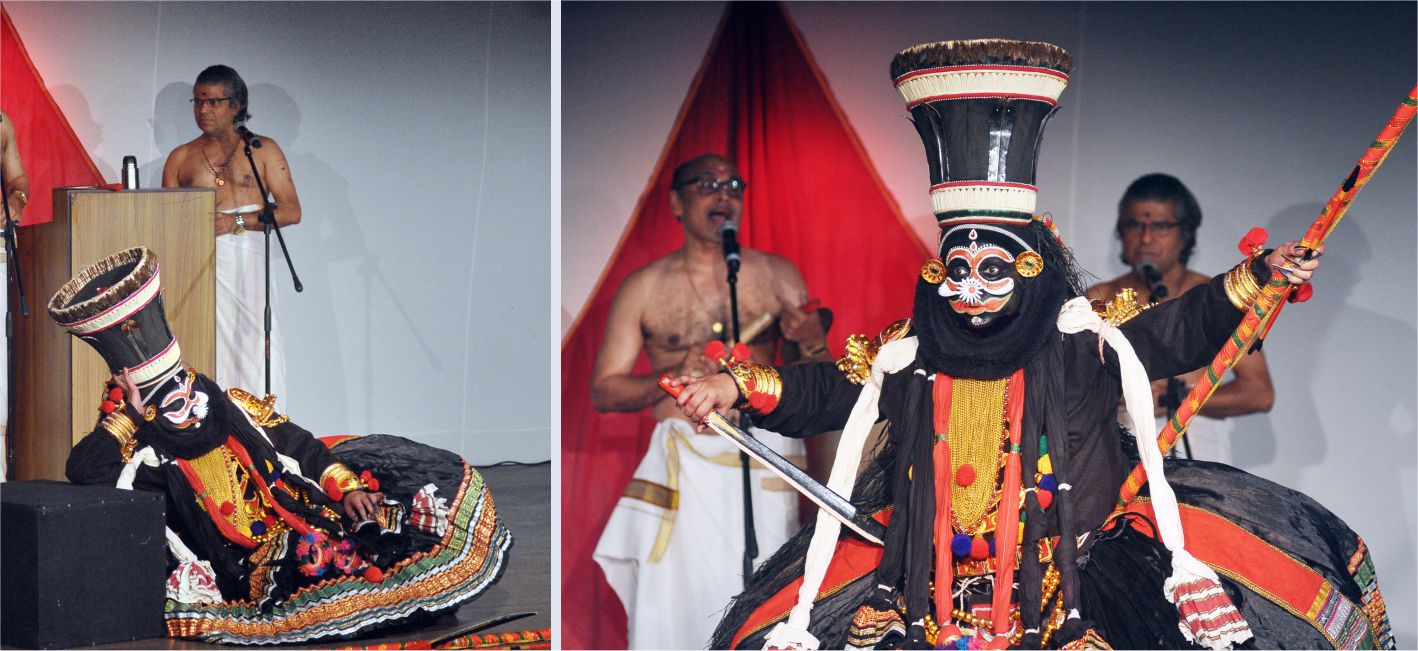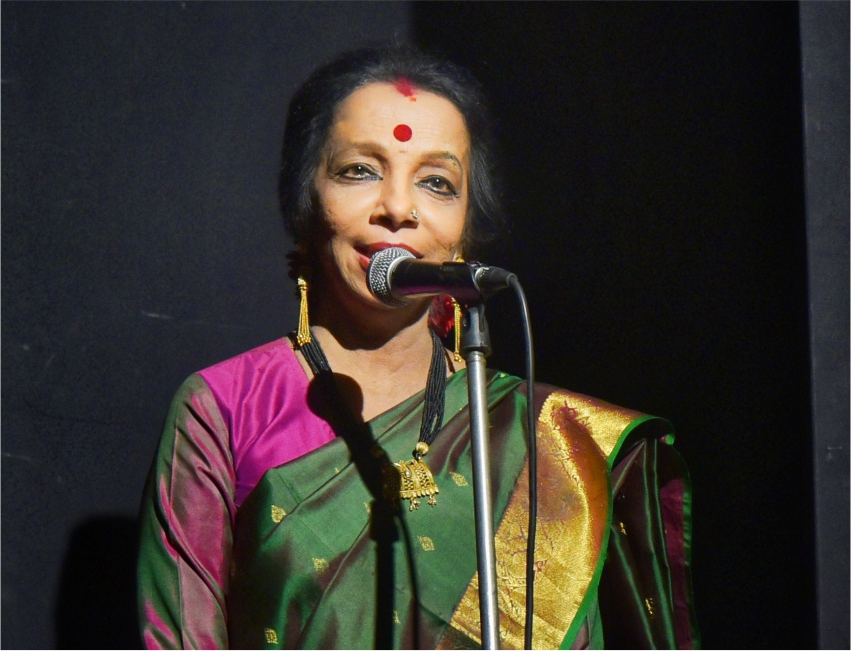Kathakali in Bollywood is a double-edged sword, says Renjish Rajan Nair

- Sandip Soparrkar
- 25 Apr, 2024
Dance Trance by Sandip Soparrkar
Kathakali is one of the most ostentatious dances in the classical dance world, it is very well appreciated yet it does not have many students who wholeheartedly take up the art of this intricate and elaborate dance form. Renjish Rajan Nair is one rare artist who has dedicated his life to Kathakali. He has performed in more than 600 stages across the country and the world and has been honoured with many awards such as: Natvar Gopikrishna National Award, Saptarang Kala Bhushan Award, Kalpataru Kala Sanman, Nritya Shiromani Award, Nritya Nishta Award and Nartaka Puraskar to name a few. Apart from this Renjish is also an acclaimed Chenda Artist. Trained under famous Guru Kavuvattam Anil Kumar Poduval, Kalamandalam Nandakumar and Sadanam Ramadas. He is also trained in Carnatic Music under Guru Venkatachalam and Usha Varrier. I spoke to this extraordinary artist on his dance journey and more, excerpts from the interview:
Tell us about your dance training and background?
I started with my dance training at the age of 7 under the tutelage of Kalashree Kalamandalam C Gopalakrishnan at an institute named Kalakshethram. I was introduced to this beautiful art form by my father and started my formal training in the year 1995. I did my arangettam in the year 1997 and since then, have started with my stage performances globally. I feel blessed and fortunate enough to perform my first character at the prestigious festival of Khajuraho in the year 2000 with the kathakali doyen and maestro Late Padmabhushan Kalamandalam Dr. Ramanakutty Nair. The feedback received from the masters, changed my direction and interest towards this art form.
Kathakali is not a very popular form. What is the reason you think?
Kathakali, a classical dance form originating from the Indian state of Kerala, indeed may not be as widely known or popular on a global scale compared to some other classical dance forms such as Bharatanatyam or Kathak. I feel the reason for it not being so popular are complexity of the moves and most difficult specialization, language barrier in the dance as all storytelling is in Manipravalam language which is a mixture of Sanskrit and Malayalam, lack of accessibility for training because not many gurus are available for this art and evolving cultural preferences of today’s generation. Despite these challenges, Kathakali remains a cherished and culturally significant art form globally, with dedicated practitioners and enthusiasts working to preserve and promote its rich heritage.
Your recent performance at the Umang Festival at National Centre for Performing Arts was very well received, please tell me more about it?
Umang festival was organised under the brilliant guidance of the dance director of NCPA Ms. Swapnokalpa Dasgupta, it was a festival for the young and promising artists. We portrayed a part taken from the Mahabharata, a story taken from Nalacharita (story of King Nala & Damayanti) written by Unnayi Warrier.
Scene 1 – The Entry of the Hunter
A hunter, sleeping in the forest, used only to the sounds of birds and animals, suddenly wakes up hearing human cries and sits up wondering from where it could be. He arms himself with weapons and walks towards the direction from which the sound originated. He realises that it is the sound of a beautiful woman crying for help. He enjoys her beauty from behind a tree and approaches her with wrong intentions.
Scene 2 – Damayanthi and the Hunter
Damayanthi finds her leg caught within the jaws of a python. She is sure that she would die and prays to her husband to remember her kindly when he hears of her death. She then observes the Hunter approaching her with bad intentions. Unaware of the plight of Damayanthi, he entreats her to hold on to his shoulder when he sees the python attempting to swallow her. He takes up his bow and arrow, kills the python and saves her.
Damayanthi thus saved, the hunter continues with his amorous pleas, but she tries to dissuade him. When he persists with his demand, she has no other go but to use the boon given by Indran – that anyone attempting to molest her chastity will turn into ashes. She finds her saviour burning into ashes, thanks the god for making his boon true and continues to walk further along the forest in search of her husband.
The moral of the story is “A saviour is not always a saviour”.
You had lots of people helping you put this together?
Oh yes I did, I played Kattalan whereas Damayanthi was played by Kalakshethram Shilpa Variar. We had accompanying artists -
Vocals we had Kalashree Kalamandalam M.S. Gireesan, Nedumbally Krishnamohan, Chenda - RLV Midhun Murali, Madallam - Kalamandalam Nithin Raj. No front stage is complete without backstage support, for that we had Nithin Nair, Vishal Nambiar and Rahul K.
How can Kathakali be made more popular?
There are some ways I think can be used to promote this art form, through education and outreach programs, collaborations and cross-cultural exchanges, digital presence and media exposure, accessible training and workshops, cultural exchanges and international tours, showcasing documentaries and educational materials. By implementing these strategies and initiatives, Kathakali can reach a wider audience, transcend cultural boundaries, and gain recognition as a captivating and culturally significant art form on the global stage. I have made small efforts from my end to educate and spread the love for this art form, have initiated a you tube channel named “Classical Dance & Arts” and also have taken many lecture demonstrations.
A few Bollywood and Hollywood songs have used Kathakali, how do you feel about it?
The portrayal of Kathakali in Bollywood and Hollywood songs can be seen as a double-edged sword, presenting both opportunities and challenges in terms of cultural representation, artistic expression, and commercialization. It's essential for filmmakers and artists to approach the integration of Kathakali or any traditional art form with proper techniques & aesthetics, sensitivity, respect, and a genuine interest in promoting cultural understanding and appreciation.




